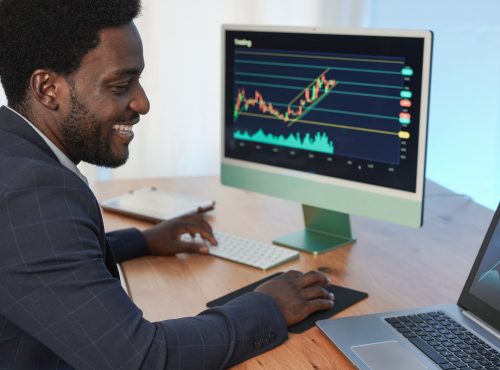
By SUNIL CHADDA
In the first three articles in this series, I highlighted some of the many asymmetries and inequalities that individuals experience as retail investors. In this, my fourth, article, I pause for breath to ask whether it really matters that you know your investment costs and then, armed with that information, keep them under control. And, if it does, why is it so important?
Firstly, some context. Since the global credit crunch in 2008, central banks have used Quantitative Easing (or QE) to try to keep money flowing and support economies. That big bust was avoided.
Much of this money, however, found its way into stock markets, commodities markets and property, with all asset classes having been recently or currently on highs. The use of QE has meant that we have all “borrowed” future returns and have consumed them since 2008.
With inflation at 0.9% p.a. in 2020, 6.2% p.a. in February 2022 and predicted to be 7.4% p.a. later this year, the situation might be about to get considerably worse as the possibility of stagflation looms on the horizon. Stagnant growth and high inflation are not a recipe for generating stable ongoing investment returns.
Controlling costs is more important now than ever
So, with returns now low and inflation rising, investment costs are probably at their highest level in history when expressed as a percentage of total return.
Investors cannot control returns, but they can control their investment costs — provided that they know what they are and where they are located.
Unsurprisingly, compounded savings in investment costs over the lifetime of your pension will be sizeable. Consider the following example based on a pension lasting 60 years, 40 in accumulation and 20 in decumulation:
“For a 25 year-old with a life expectancy of 85 who saves every year and retires at 65 years, a 1% charge — which sounds reasonable until you consider that this charge is levied every year and compounds over the life of the pension — will slice a whopping 25% off the income he or she would otherwise receive in retirement. A 1.5% charge will cut it by 38%, and a 2% charge will reduce it by nearly half”.
(Source: What They Do With Your Money, Davis, Lukomnik & Pitt-Watson, June 2016).
Multiple layers of fees and charges
That’s great, but just how do you magically identify and then go on to save that 1-2% each and every year? Just where exactly do you start? Investment costs in financial products are layered, and you may well pay them at each “layer” or at a combination of “layers”.
For example, each of the following may be a good example of layered costs in our investments:
1. investment platform/ broker-level;
2. product level (i.e. ISA/SIPP);
3. fund level, and
4. instrument level.
These are the most common layers. Try identifying some of them. You’ll be surprised at how much money you’re paying.
Even I got stung by excessive costs
About two years ago, after looking carefully at what I was paying for a SIPP and everything involved in it, I decided to seek better “value” elsewhere. I ended up switching investment platform. From what I could tell (and I am an expert in investment fees and charges), I was paying a minimum of 2.44% a year. But I just couldn’t source the cost information to understand exactly how much I was paying in total.
I now pay 0.45% a year and am confident that this figure is fairly close to what I think the true cost of everything to be. That is a saving of around 2% a year, and, in light of the figures quoted in the example above, I wished that I had understood this before!
How many of us are aware of how much we really do pay?
Lower costs lead to better outcomes
Clearly, if you can keep your costs down while obtaining what you believe to be “value”, then you should be looking at a better financial outcome. You will still have to get over the hurdle of covering your overall costs, that is the inflation rate — currently around 6.2% — plus your investment costs.
If knowing our investment costs is so important, then why is it so hard for us to find them and understand them?
So, remember that much-asked bigger question? Is retail unit-holder inequality limited to the differential in share class costs, asymmetries in fund documentation, flawed “Assessment of Value” Disclosures and asymmetries in financial knowledge? I think not.
SUNIL CHADDA is a a member of the All Party Parliamentary Group for Personal Banking and Fairer Financial Services, an ex-Special Adviser to the Association of Professional Fund Investors, and an Ambassador for the Transparency Task Force.
ALSO IN THIS SERIES
Investment costs: how even the experts get stung
Has Assessment of Value achieved anything?
Investors aren’t given the fund information they need
Retail investors pay up to 60 times more than institutions
NEW INVESTOR?
If you’re new to investing, TEBI founder Robin Powell and fellow financial blogger Ben Carlson have written a book that you really ought to read. It’s called Invest Your Way to Financial Freedom, and it’s published by Harriman House.
Primarily written for a UK audience, the book has no hidden sales agenda and is based on peer-reviewed academic evidence. It explains, in simple terms, how young investors can develop good habits, save a fortune in unnecessary fees, and achieve financial freedom many years earlier than they otherwise would.
You can either buy the book direct from the publisher or via Amazon:
For those in the UK,
Buy the paperback via Harriman House here
Buy the paperback via Amazon here
Buy an audio version on Audible here
For those outside the UK,
Buy the Kindle version via Amazon here
© The Evidence-Based Investor MMXXII









